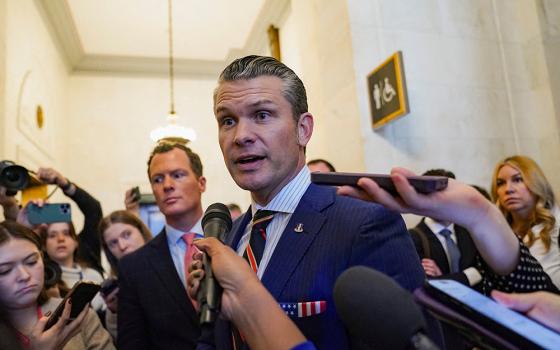America magazine this week takes a look back at the Vietnam War and the moral issues that war raised. Lessons are pertinent today, if we care to listen and learn. As part of America’s war coverage, my friend and journalism colleague Jesuit Father Raymond Schroth, America’s literary editor, asked me some weeks back to review a landmark book written by journalist and researcher, Nick Turse. It’s titled Kill Anything That Moves and documents the record of American brutalities in Vietnam. He relies on secret defense department documents he uncovered as well and many scores of interviews with Vietnam War vets and others who spent time in Vietnam, including key journalists.
Schroth, meanwhile, drawing on his experience as a summer editor and columnist during the 1960s, traces America's coverage of Vietnam from the fall of Dien Bien Phu in 1954 to the U.S. retreat from Saigon as the North Vietnamese entered in April 1975.
I graduated from Stanford University in 1966, full of idealism in the wake of the closing of Vatican II, which coincided my four years at Stanford. It seemed natural to volunteer for Vietnam, but not as a combatant. I joined a nonprofit organization, founded by the Quakers and Mennonites, called International Voluntary Services.
Before heading to Saigon for language training, I contacted NCR (founding) Editor Robert Hoyt who encouraged me to report from Vietnam for NCR. My first article appeared late in the summer of 1966. It highlighted the conditions I found on the ground in Saigon. I would not dare call myself a journalist at the time. But I was able to record what was happening around me. I would put together something I thought might be publishable and - miraculously – my prose improved dramatically once it entered NCR’s editorial office in Kansas City, Missouri.
To its credit NCR took an early interest in Vietnam and maintained a vigilance and moral outrage during the war. I continued to write for NCR through the late 1960s and into the early 1970s. NCR was one of only a handful of publications – and almost certainly the first national publication – to open its pages to reporting Vietnam beyond the military battles. Until the Tet offensive in January 1968, the U.S. government and military line, taken almost unquestioningly by the press, was the war was going well and the U.S. “pacification program” was effective in “winning the hearts and minds” of the people.
This, however, was not the case. NCR was one of a few publications that was not printing the party line.
My NCR reporting experiences took me in the early 1970s into the reporting bureaus of The New York Times and Time magazine where I worked as a cub reporter. My path into journalism was being set. It was becoming grounded in experiences caused by war and human arrogance. I experienced incalculable human suffering, waste and disruption.
Looking back, I am grateful to those early NCR editors, as well as to the Catholic writer, Michael Novak, then a professor at Stanford. It was he who first suggested I contact Hoyt before venturing into the unknowns of Asia.




